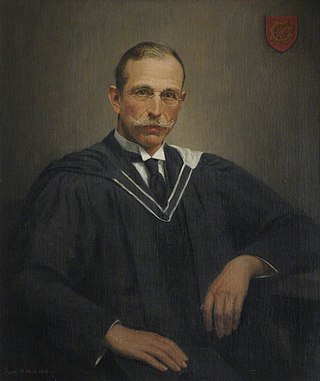
King's College is a constituent college of the University of Cambridge. Formally The King's College of Our Lady and Saint Nicholas in Cambridge, the college lies beside the River Cam and faces out onto King's Parade in the centre of the city.

Thomas Rotherham, also known as Thomas (Scot) de Rotherham, was an English cleric and statesman. He served as bishop of several dioceses, most notably as Archbishop of York and, on two occasions as Lord Chancellor. He is considered a venerable figure in Rotherham, South Yorkshire, his town of birth.

John Alcock was an English churchman, bishop and Lord Chancellor.

St Catharine's College is a constituent college of the University of Cambridge. Founded in 1473 as Katharine Hall, it adopted its current name in 1860. The college is nicknamed "Catz". The college is located in the historic city-centre of Cambridge, and lies just south of King's College and across the street from Corpus Christi College. The college is notable for its open court that faces towards Trumpington Street.

William Waynflete, born William Patten, was Provost of Eton College (1442–1447), Bishop of Winchester (1447–1486) and Lord Chancellor of England (1456–1460). He founded Magdalen College, Oxford and three subsidiary schools, namely Magdalen College School in Oxford, Magdalen College School, Brackley in Northamptonshire and Wainfleet All Saints in Lincolnshire.
Nicholas Close was an English priest.

Lawrence Booth served as Prince-Bishop of Durham and Lord Chancellor of England, before being appointed Archbishop of York.
Dame Jean Olwen Thomas, is a Welsh biochemist, former Master of St Catharine's College, Cambridge, and Chancellor of Swansea University.
Edmund Cosyn (Cosin) was an English Catholic academic and Vice-Chancellor of Cambridge University of the middle sixteenth century.
A head of college or head of house is the head or senior member of a college within a collegiate university. The title used varies between colleges, including dean, master, president, principal, provost, rector and warden.
John Bond LL.D. (1612–1676) was an English jurist, Puritan clergyman, member of the Westminster Assembly, and Master of Trinity Hall, Cambridge.

John May (Meye) was an English academic and churchman, who became Bishop of Carlisle. He also served the House of De Vere as cleric in Buckinghamshire.

Thomas Boleyn, LL.B, , was the Master of Gonville Hall, Cambridge from 1454 to 1472, the seventh to hold that position. During the later 1440s, through three separate acts of foundation, he was one of the small group appointed to formulate the statutes of what became Queens' College in Cambridge. His brother Sir Geoffrey Boleyn, Lord Mayor of London 1457-58, was the great-grandfather of Anne Boleyn, Queen consort of England.

Frederick Margetson Rushmore, TD, MA, JP was Master of St Catharine's College, Cambridge from 1927 to 1933.
Richard Roche was Master of St Catharine's College, Cambridge from 1475 until 1480.
John Howorth, D.D. was a 17th-century priest and academic.

John Balderston was an academic at the University of Cambridge, master of Emmanuel College and twice vice-chancellor of the university.
Kenrick Prescot, D.D. was a priest and academic in the second half of the 18th century.
Edward Hubbard, D.D. was a priest and academic in the second half of the 18th-century.











